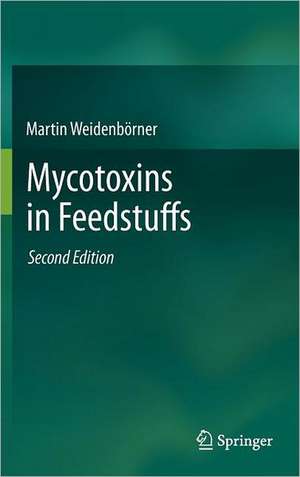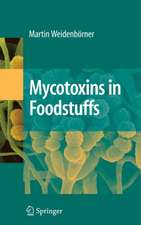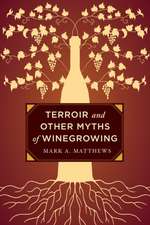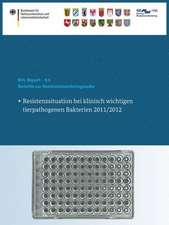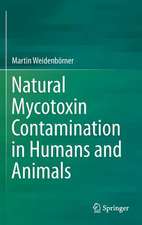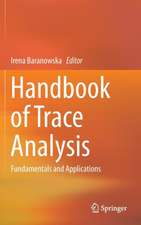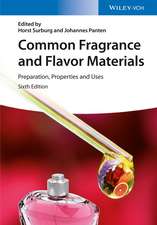Mycotoxins in Feedstuffs
Autor Martin Weidenbörneren Limba Engleză Hardback – dec 2011
This second edition will feature:
- More than 180 new publications concerning mycotoxins in feedstuffs.
- A more efficient organization of the content, making the book easier to use in daily practice.
- A single-chapter overview of mycotoxins in the corresponding feedstuffs.
| Toate formatele și edițiile | Preț | Express |
|---|---|---|
| Paperback (2) | 697.97 lei 6-8 săpt. | |
| Springer – 28 noi 2010 | 697.97 lei 6-8 săpt. | |
| Springer Us – 3 mar 2014 | 944.51 lei 6-8 săpt. | |
| Hardback (2) | 646.62 lei 6-8 săpt. | |
| Springer Us – dec 2011 | 646.62 lei 6-8 săpt. | |
| Springer – 22 mai 2007 | 949.73 lei 6-8 săpt. |
Preț: 646.62 lei
Preț vechi: 760.73 lei
-15% Nou
Puncte Express: 970
Preț estimativ în valută:
123.75€ • 127.84$ • 102.99£
123.75€ • 127.84$ • 102.99£
Carte tipărită la comandă
Livrare economică 26 martie-09 aprilie
Preluare comenzi: 021 569.72.76
Specificații
ISBN-13: 9781461408024
ISBN-10: 1461408024
Pagini: 296
Ilustrații: XXVI, 270 p.
Dimensiuni: 155 x 235 x 20 mm
Greutate: 0.59 kg
Ediția:2nd ed. 2012
Editura: Springer Us
Colecția Springer
Locul publicării:New York, NY, United States
ISBN-10: 1461408024
Pagini: 296
Ilustrații: XXVI, 270 p.
Dimensiuni: 155 x 235 x 20 mm
Greutate: 0.59 kg
Ediția:2nd ed. 2012
Editura: Springer Us
Colecția Springer
Locul publicării:New York, NY, United States
Public țintă
Professional/practitionerTextul de pe ultima copertă
Mycotoxins are substances produced from fungal secondary metabolic processes. They impair animal health, thereby causing great economic losses of livestock through disease. Livestock come into contact with mycotoxins through contaminated feedstuff. Feedstuff is any of the constituent nutrients of an animal ration. The plants used in feed, such as grains, oil seeds, nuts, and root crops, are susceptible to mycotoxin contamination. Mycotoxins in Feedstuffs lists (in the style of a dictionary) feeds which have been reported to have been contaminated with mycotoxins, including data on the degree of contamination, the concentration of the toxins, and the country of origin and/or detection of the contaminated feed.
This second edition will feature:
- More than 180 new publications concerning mycotoxins in feedstuffs.
- A more efficient organization of the content, making the book easier to use in daily practice.
- A single-chapter overview of mycotoxins in the corresponding feedstuffs.
This second edition will feature:
- More than 180 new publications concerning mycotoxins in feedstuffs.
- A more efficient organization of the content, making the book easier to use in daily practice.
- A single-chapter overview of mycotoxins in the corresponding feedstuffs.
Caracteristici
More than 180 new publications concerning mycotoxins in feedstuffs A more efficient organization of the content, making the book easier to use in daily practice A single-chapter overview of mycotoxins in the corresponding feedstuffs Includes supplementary material: sn.pub/extras
Descriere
Descriere de la o altă ediție sau format:
Feedstuff is a common standard for each kind of food for animals, which are in the charge of man and serve as food. Feed for livestock is of special interest. The quality of feed is responsible for the health of animals and indirectly for the quality of human nutrition. Agriculturally used plants, such as numerous grains, oil seeds and nuts, root crops, and to a smaller extent, many forage crops are susceptible to mycotoxin contamination. Fungal and in the end mycotoxin contaminated feed may be involved in modern livestock production practice (confined rearing on high-density diets) because plant feedstuff especially from multiple sources may be used for feeding. The mixing of mycotoxin contaminated pecan, walnut, or other nut meats into feedstuff is one example. The nuts are pressed to recover the oil while most of the toxin is concentrated in the residual meats. The press cake usually is diverted into animal feed channels. The amount of these (protein supplement) ingredients, while small, could cause problems in the health of animal and human. Available data suggest that the mold and mycotoxin problem is largely one of the worldwide feed management. Especially individual farm silos and feed troughs are major sites of toxin production in mold-contaminated feeds. Guidelines for the investigation and amelioration of feedstuff quality in different countries have been prepared. Mycotoxin contamination of feeds occurs as a result of crop invasion by field fungi.
Feedstuff is a common standard for each kind of food for animals, which are in the charge of man and serve as food. Feed for livestock is of special interest. The quality of feed is responsible for the health of animals and indirectly for the quality of human nutrition. Agriculturally used plants, such as numerous grains, oil seeds and nuts, root crops, and to a smaller extent, many forage crops are susceptible to mycotoxin contamination. Fungal and in the end mycotoxin contaminated feed may be involved in modern livestock production practice (confined rearing on high-density diets) because plant feedstuff especially from multiple sources may be used for feeding. The mixing of mycotoxin contaminated pecan, walnut, or other nut meats into feedstuff is one example. The nuts are pressed to recover the oil while most of the toxin is concentrated in the residual meats. The press cake usually is diverted into animal feed channels. The amount of these (protein supplement) ingredients, while small, could cause problems in the health of animal and human. Available data suggest that the mold and mycotoxin problem is largely one of the worldwide feed management. Especially individual farm silos and feed troughs are major sites of toxin production in mold-contaminated feeds. Guidelines for the investigation and amelioration of feedstuff quality in different countries have been prepared. Mycotoxin contamination of feeds occurs as a result of crop invasion by field fungi.
Cuprins
Mycotoxins in Feedstuffs.
Recenzii
From the reviews:
"Printed in a handsome format, this book provides a compilation of the occurrence of mycotoxins in feed materials, including, where appropriate, comparisons with foods. … It is a valuable source of information for those involved in the feed business … . is a useful inventory for professionals in animal nutrition, the feed industry, as well as in feed inspection and control services. Due to its clear structure and format, it is ready for use in daily practice." (J. Fink-Gremmels, World Mycotoxin Journal, Vol. 1 (3), 2008)
"Printed in a handsome format, this book provides a compilation of the occurrence of mycotoxins in feed materials, including, where appropriate, comparisons with foods. … It is a valuable source of information for those involved in the feed business … . is a useful inventory for professionals in animal nutrition, the feed industry, as well as in feed inspection and control services. Due to its clear structure and format, it is ready for use in daily practice." (J. Fink-Gremmels, World Mycotoxin Journal, Vol. 1 (3), 2008)
